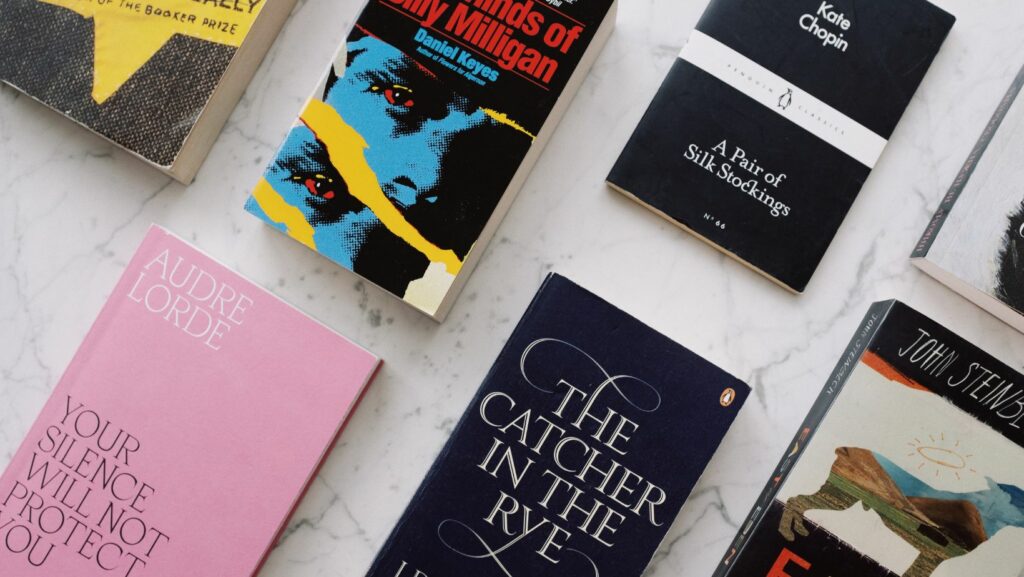Book Genres Poster
- Understanding Book Genres: Book genres categorize literature into distinct types, enriching the reading experience by aligning preferences with themes and styles.
- Variety of Genres: Common genres include fiction, non-fiction, mystery, fantasy, romance, and science fiction, each featuring unique conventions that guide readers’ expectations.
- Importance of Genre Recognition: Familiarity with different genres enables readers to identify personal preferences, discover new titles, and engage with diverse writing styles.
- Design Elements of a Book Genres Poster: Effective posters should incorporate genre names, illustrative icons, brief descriptions, color coding, and examples of popular titles to enhance visual appeal and educational value.
- Educational and Aesthetic Benefits: A book genres poster serves as a valuable educational tool in classrooms and homes, promoting critical thinking while enhancing the aesthetics of reading spaces, encouraging reader interaction.
 In a world overflowing with stories, book genres serve as a roadmap for readers seeking their next adventure. From the spine-tingling thrill of mystery to the heartwarming embrace of romance, each genre offers a unique lens through which to explore human experience. A book genres poster not only highlights these categories but also sparks curiosity and encourages exploration among readers of all ages.
In a world overflowing with stories, book genres serve as a roadmap for readers seeking their next adventure. From the spine-tingling thrill of mystery to the heartwarming embrace of romance, each genre offers a unique lens through which to explore human experience. A book genres poster not only highlights these categories but also sparks curiosity and encourages exploration among readers of all ages.
Visual representations of genres can transform a blank wall into a vibrant library of imagination. They serve as a powerful tool for educators, parents, and avid readers alike, helping to categorize and celebrate the diverse landscape of literature. By understanding the various genres, readers can discover new favorites and broaden their literary horizons, making the journey through books even more exciting.
Overview of Book Genres
Book genres categorize literature into distinct types, enabling readers to navigate their choices effectively. Understanding genres enriches the reading experience by aligning preferences with thematic elements.
Definition of Book Genres
Book genres classify literature based on shared characteristics, themes, or styles. Common genres include fiction, non-fiction, mystery, fantasy, romance, and science fiction. Genres help readers identify the types of stories or information they seek. Each genre features unique conventions, helping set expectations for narrative and structure.
Importance of Understanding Genres
Understanding genres enhances readers’ experiences and choices. Genres provide frameworks that guide literary exploration. Familiarity with different genres allows readers to:
- Identify personal preferences in authors and narratives.
- Discover new titles within specific genres they enjoy.
- Engage with diverse writing styles and perspectives.
- Assist educators and parents in selecting appropriate literature for different age groups.
Recognizing the significance of genres supports informed reading and promotes a lifelong love of literature.
Types of Book Genres
Understanding the types of book genres enhances the reading experience by providing clear categories for diverse literature. Below are the primary genres that readers commonly explore.
Fiction Genres
Fiction genres create immersive worlds for readers. They include:
- Fantasy: Features magical elements, often set in imaginary universes. Examples include series like “”Harry Potter”” or “”The Lord of the Rings.””
- Science Fiction: Explores futuristic concepts, technology, and space travel. Notable works include “”Dune”” and “”Neuromancer.””
- Mystery: Centers around solving a crime or uncovering secrets. Popular titles include “”The Girl with the Dragon Tattoo”” and “”Gone Girl.””
- Romance: Focuses on romantic relationships and emotional connections. Examples are “”Pride and Prejudice”” and “”The Notebook.””
- Historical Fiction: Combines fictional narratives with historical events. “”The Book Thief”” and “”All the Light We Cannot See”” exemplify this genre.
Non-Fiction Genres
Non-fiction genres present factual information and real-life narratives. They encompass:
- Biographies: Life stories of notable individuals. Titles such as “”The Diary of a Young Girl”” and “”Becoming”” fit here.
- Self-Help: Offers guidance and strategies for personal improvement. “”Atomic Habits”” and “”The Power of Habit”” are prime examples.
- Travel: Chronicles journeys and explorations. Works like “”A Walk in the Woods”” and “”Into the Wild”” are well-known.
- History: Delve into past events and their implications. “”Sapiens: A Brief History of Humankind”” and “”The Wright Brothers”” stand out.
- True Crime: Investigates real criminal cases. Examples include “”In Cold Blood”” and “”I’ll Be Gone in the Dark.””
- Young Adult (YA): Typically combines coming-of-age elements with genres like fantasy, romance, or dystopia, seen in titles like “”The Hunger Games”” and “”The Fault in Our Stars.””
- Graphic Novels: Merge visual art with narrative storytelling, encompassing fiction and non-fiction categories, like “”Maus”” and “”Persepolis.””
- Cli-Fi: Combines science fiction with environmental themes, often addressing climate change, with examples like “”New York 2140″” and “”The Overstory.””
- Magical Realism: Intertwines fantastical elements with realistic settings. Notable works include “”One Hundred Years of Solitude”” and “”The House of the Spirits.””
Designing a Book Genres Poster
Creating a captivating book genres poster involves thoughtful design choices that capture attention and convey essential information about different literary categories. A well-crafted poster serves as both an educational tool and an inspiring visual element.
Key Elements to Include
Incorporating several key elements enhances the effectiveness of a book genres poster:
- Genre Names: Clearly label each genre, ensuring visibility and readability.
- Illustrative Icons: Use relevant icons or images representing each genre, such as a magnifying glass for mystery or a spaceship for science fiction, to quickly communicate themes.
- Brief Descriptions: Provide concise descriptions of each genre to offer insight into its characteristics and themes.
- Color-Coded Genres: Assign distinct colors to each genre for easy identification and organization.
- Examples of Popular Titles: Include notable book titles within each genre to give readers concrete options for exploration.
Color Schemes and Visual Appeal
Color schemes significantly influence the visual impact of the poster. Selecting harmonious colors not only enhances aesthetics but also aids in genre differentiation.
- Complementary Colors: Use contrasting colors for text and background to improve readability and focus attention.
- Mood Representation: Choose colors that reflect the tone of each genre; for instance, dark blues or grays work well for mystery, while bright yellows or pinks suit romance genres.
- Consistent Fonts: Use legible fonts that resonate with the genre’s theme; elegant scripts for romance, bold sans-serifs for adventure.
- Balanced Layout: Ensure a clean, balanced layout that facilitates easy navigation of the information, avoiding clutter for a more professional presentation.
- Incorporate Graphics: Employ designs, photographs, or illustrations to create a dynamic, visually appealing poster that stimulates interest.
Designing a book genres poster with these elements ensures it serves its purpose and enriches the literary environment.
Benefits of a Book Genres Poster
A book genres poster offers various advantages, significantly enriching the reading environment and enhancing educational experiences. It acts as a visual guide, helping readers navigate the diverse world of literature.
Educational Value
A book genres poster serves a crucial educational role by categorizing literature in a clear and accessible manner. It facilitates understanding of different genres, allowing readers to quickly identify their interests. Educators can use the poster as a teaching tool in classrooms to foster discussions about genre characteristics and themes. Parents can reference it when selecting age-appropriate books for their children, ensuring that selections align with developmental stages. The poster promotes critical thinking as readers explore new genres, enhancing their literary knowledge and encouraging a broader appreciation for diverse writing styles.
Aesthetic Enhancement for Spaces
 A book genres poster significantly enhances the aesthetics of reading spaces, such as classrooms, libraries, and homes. Colorful designs and engaging visuals capture attention and invite exploration. By integrating genre names and illustrative icons, the poster creates an inviting atmosphere that encourages readers to interact with the literature. Thoughtful design elements, such as balanced layouts and consistent fonts, contribute to a visually appealing display. A well-designed poster not only informs but also inspires readers of all ages, making literary exploration a visually enriching experience.
A book genres poster significantly enhances the aesthetics of reading spaces, such as classrooms, libraries, and homes. Colorful designs and engaging visuals capture attention and invite exploration. By integrating genre names and illustrative icons, the poster creates an inviting atmosphere that encourages readers to interact with the literature. Thoughtful design elements, such as balanced layouts and consistent fonts, contribute to a visually appealing display. A well-designed poster not only informs but also inspires readers of all ages, making literary exploration a visually enriching experience.
More Than Just a Decorative Piece
A book genres poster is more than just a decorative piece; it’s a valuable tool that enhances the reading experience. By visually categorizing literature, it invites readers to explore various genres and discover new favorites. The thoughtful design elements can transform any space into an inspiring literary environment.
Educators and parents benefit from having a clear visual guide that aids in selecting appropriate literature. This encourages discussions about different genres and fosters a deeper understanding of storytelling. Ultimately, a well-crafted book genres poster not only beautifies a space but also ignites curiosity and promotes a lifelong love of reading.



